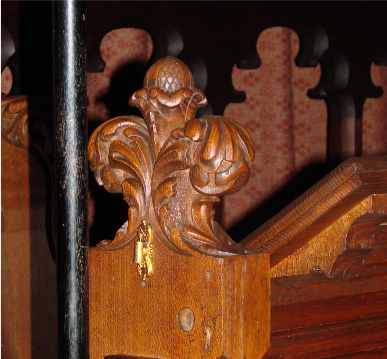The Cathedral of St. Andrew and St. Michael is the principal of a number of Anglican parishes in Bloemfontein, capital of the Free State Province, South Africa.
The Name
The Cathedral’s name is the result of two important events in its life: The foundation stone was laid on St. Andrew’s Day and Bishop Twells held his first service in the Cathedral on St. Michaels Day
Early History
The Anglican community in Bloemfontein was established by Bishop Gray, four years after the city’s founding in 1846. He held the first Anglican service on 5 May 1850. At that time he was requested to consider a fulltime priest and church for the city.
On 25 November 1850, Major Henry Douglas Warden laid the foundation stone for Cathedral building. Building operations continued on-and-off from then on. In 1853 Bishop Gray transferred Deacon WA Steadler to Bloemfontein as full-time minister.
In 1854, British troops withdrew from Bloemfontein, and most of the clergy from English language churches left with them, including Deacon Steadler. Building work on the Cathedral stopped and from 1854 to 1858 the building stood unattended and neglected. The building was then used as a fort, and later even as a sheep kraal.
Cathedral Revived and given Own Bishop
On 4 October 1863 Edward Twells was enthroned as Bishop of Bloemfontein and work on the Cathedral restarted — by removing the old structure and starting afresh. The new cathedral was consecrated on 30 November 1866. The Anglican community grew rapidly and a few years later, in 1876, it was realised that a larger church was needed. Building of a temporary nave was started and in 1885 a permanent construction was completed.
Over the next few decades many additions to the Cathedral was made, including installing an organ, building a bell-tower and installing electric lights!
Renovations
In 1984, almost a 100 years after the completion of the original building, the Cathedral was restored by the re-pointing of the brickwork, repairing broken sections and rebuilding the bell-tower.
Today
Today the Cathedral is home to a small but thriving Anglican community of approximately 300 families — no longer just English, but from African, Afrikaans, Coloured, Dutch, English, Greek, Indian, Lebanese and Portuguese backgrounds.
The Cathedral and its gardens are well known for its beauty — an oasis where wild birds and fowl can frequently be seen. Inside the Cathedral a number of exquisite stained glass windows can be found. More information on the staff……




























































